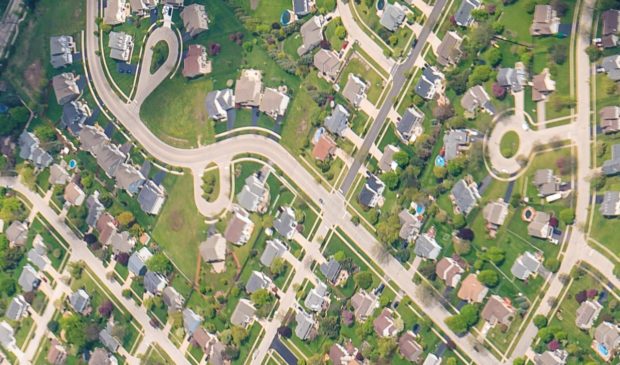To improve connectivity, ZAP recommends prohibiting culs-de-sac in most cases
Friday, September 23, 2022 by
Jonathan Lee The Zoning and Platting Commission recommended changes to city code on Tuesday to improve street connectivity in new subdivisions.
“I look at culs-de-sac as kind of destroying the grid,” said Commissioner Lonny Stern, who initially proposed the changes. He explained that a grid of streets is much easier to navigate than a web of culs-de-sac, especially for people who bike, walk or take transit, as well as those who can’t drive, like children or people with vision loss.
The conversation began a couple months ago when Stern argued that a subdivision under review by the commission had too many dead ends, preventing connectivity to adjacent neighborhoods.
The cul-de-sac style of suburban development has predominated since the mid-20th century, when cars became the main way to get around for most people. Nowadays, however, dead ends are increasingly frowned upon by urban planners who say they lead to more driving – and therefore more carbon emissions – and discourage walking, biking and transit use.
The city already dissuades developers from including culs-de-sac in their designs. The Transportation Criteria Manual states that “culs-de-sac shall be used sparingly,” as they violate the “compact and connected city” mantra from Imagine Austin, the city’s comprehensive plan.
The commission’s recommended changes to city code, laid out in a resolution, go further. Proposed changes include:
- Defining cul-de-sac and dead-end
- Limiting block length to 600 feet
- Requiring connections and alignment of all “stub out” streets of a new subdivision to existing or proposed streets, and where infeasible, requiring a trail connection
- Prohibiting dead-end streets and/or culs-de-sac unless the director of the Transportation Department determines that topography, natural features or unusual conditions make connection to an existing or proposed street infeasible
- Limiting the lengths of dead-end streets and culs-de-sac to 300 feet and requiring a multi-use trail connection
- Requiring more connections to external streets for larger subdivisions
The vote was 7-2-1, with commissioners Hank Smith and Carrie Thompson against and Cesar Acosta abstaining.
Thompson argued that culs-de-sac can be beneficial in many cases. “I think culs-de-sac in the right places provide a lot of other assets to the community, and I just don’t feel it’s the role of this commission to dictate what each scenario should look like,” she said.
Thompson had pushed to include language in the resolution highlighting the benefits of culs-de-sac for residents, but she was overruled.
Smith said it’s not developers but neighbors who often oppose connectivity in planned developments. “Ninety percent of the time, the reason it’s not tied into is because neighbors complain, not wanting a cut-through street,” he said.
ZAP, unlike the Planning Commission, can’t directly initiate a change to city code. It’s unclear yet whether City Council will decide to follow ZAP’s recommendation and put the changes into code.
The Austin Monitor’s work is made possible by donations from the community. Though our reporting covers donors from time to time, we are careful to keep business and editorial efforts separate while maintaining transparency. A complete list of donors is available here, and our code of ethics is explained here.
You're a community leader
And we’re honored you look to us for serious, in-depth news. You know a strong community needs local and dedicated watchdog reporting. We’re here for you and that won’t change. Now will you take the powerful next step and support our nonprofit news organization?



